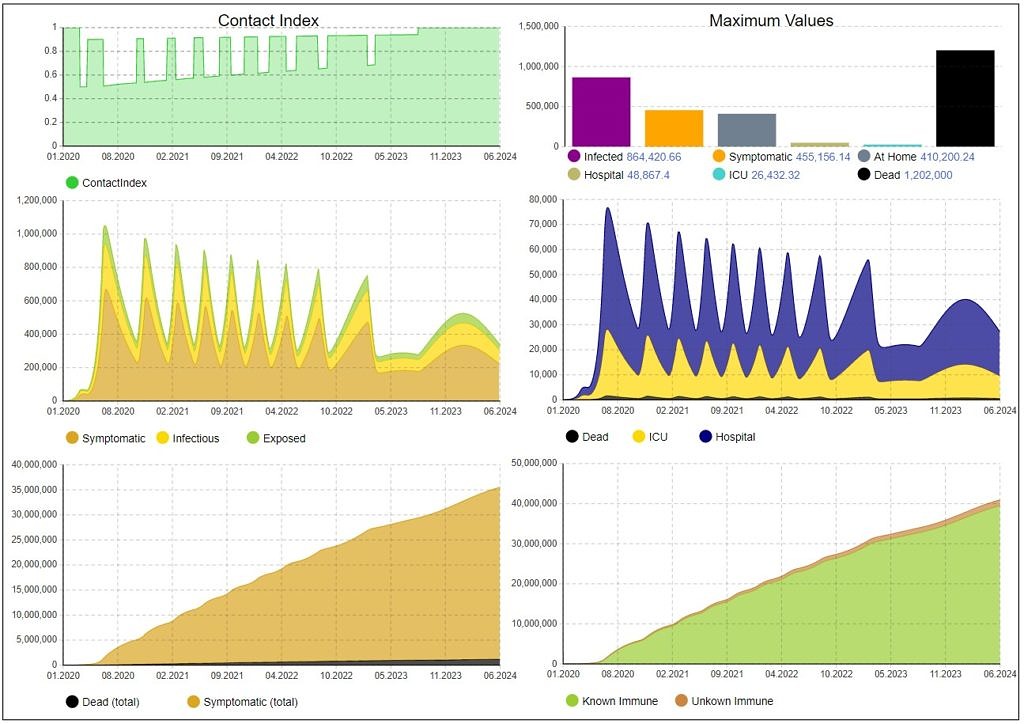Modelling the COVID-19 pandemic: strategies for controlled take-back of restrictions

Modelling the COVID-19 pandemic: strategies for controlled take-back of restrictions
A working group at the Chair of Computer Science 7 (Computer Networks and Communication Systems) is developing models to replicate the course of the COVID-19
pandemic and to estimate the effects of strategies for a controlled take-back of current restrictive measures (exit from lock-down).
The working group is headed by Prof. Reinhard German. The chair has many years of experience in the simulation of complex systems in the fields of
networked mobility, intelligent energy systems and health. There is an intensive contact to physicians to support the work.
Two simulation models were created in a very short time: One model based on differential equations with an aggregated view for deriving tendencies and an agent-based model with
individual behavior for more precise statements for individual groups of people. The first model has already been validated against the model created by the Robert Koch Institute for the SARS-CoV-2 epidemic in Germany.
The objective of both models is to estimate the controlled take-back of measures. On the one hand, it is important to avoid overloading the health care system (e.g. occupancy of beds in intensive care units) and on the other hand, social contacts must be facilitated again as soon as possible for a variety of reasons. The models can be used, for example, to investigate the effects of a rapid return to the state before the lock-down. An adaptive strategy, in which repeated short-term contact reductions are made depending on critical parameters, seems promising. This can be improved by wearing face masks and using antibody tests. These can be used to identify persons who have probably developed immunity after an infection. For this group, restrictions on contact reduction can be lifted. This is particularly important for persons from system-relevant areas such as the health care system or vulnerable groups of people. Another approach is digital contact tracing via apps to indicate previous contact with a person who is now ill. The models are constantly being expanded to better understand the interaction of several effects such as PCR tests, digital contact tracking, age-dependency of the severity of the disease, risk of recurrence after relaxation of measures and herd immunity.
Models and first results were published as preprint on medRxiv
Involved persons: Dr. Anatoli Djanatliev, Lisa Maile, Dr. Peter Bazan, Prof. Reinhard German, Chair of Computer Science 7 (Computer Networks and Communication
Systems), FAU.
